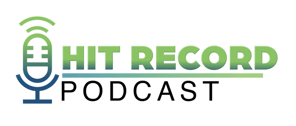Episode 20 - How to Keep Content Fresh & Relevant


Don't Miss An Episode, Subscribe Now

Podcast Episode 20: The FIGROW team discusses best practices and tips to drive fresh content on your website and other digital assets. Your website should present new, relevant, and interesting information that will drive quality leads and conversions for your bank or credit union.
Transcription:
Have you ever been talking about something that's really useful and thought, "That's a great idea, let's hit record so we can share this with everyone?” If you're looking for best practices for your bank or credit union, join us while we talk all things sales, marketing, and strategy for financial institutions. Let's make it happen with FI GROW Solutions.
Meredith Olmstead:
Hi there, I'm Meredith Olmstead, CEO and founder of FI GROW Solutions. We are a marketing agency and we work with banks and credit unions on digital marketing and sales. And I am here with Penne VanderBush, our chief of strategy. Say hi, Penne.
Penne VanderBush:
Hey there.
Meredith Olmstead:
So we were just having an awesome conversation about how to keep content fresh for banks and credit unions. So that's who we work with. So we wanted to talk, take a minute, hit pause and talk to you guys a little bit about some tips that we've really discovered over the years for how to really drive fresh content, make sure that people, when they're coming to your website or really any of your digital assets are seeing new, relevant, interesting information and content that is going to help drive leads and conversions for your banker credit union.
Penne VanderBush:
Yeah, absolutely. You know, some platforms do offer the ability that your website may be hosted somewhere where you have what's called like smart content where like based off someone's behavior you can change out what they see when they visit your homepage. That homepage hero space could be behavior based. If they were recently on a checking account page, then they see checking account content. They're recently on a credit card page. They see that. So behavior based relevancy in content, like displaying content to your website visitors, especially in the digital space is huge. But if you don't have the capability to do that, or if you do definitely be doing it, but in addition to that, we're going to cover some of the other content areas where we're not talking about that automatic, agile, smart behavior based content, switching that a lot of CMS allow you to do now.
Penne VanderBush:
Starting with when you make your marketing strategy, if you subscribe to the inbound philosophy and are structuring your content into content clusters, so you have a pillar page supported by blog post that are backlinked internally to one another strategically, so that you're performing better and organic, and that you're ranking each year when you go to build your new campaign. What you want to do is look at your existing cluster. So let's say, it's a credit card campaign. You want to start by looking at all the credit card blog information and post and content that you have already your existing ebook on the pillar page and add to that and refresh what you have. You don't need to start over every year, and I think that a lot of the times we see people believing that they have to completely start over with all brand new content every year or when the next season comes along.
Penne VanderBush:
And that's not necessarily true. You can absolutely refresh that content cluster that you already have. Bring new content into that cluster. Send some marketing emails out, or if you got a monthly newsletter that you're sending, whatever that may be, using that new content to bring people back into that cluster and then cycle them through nurturing and nurture emails, the existing content that you have there. So, I think the first point is that don't forget about your existing content that's already working really hard for you and already has history with search engines like Google. Make sure that you're updating that refreshing it and adding to that cluster, make your cluster stronger as you go. Don't abandon them.
Meredith Olmstead:
Yeah, absolutely. And I think one of the other things that we've been doing for clients more recently in addition to content clusters, which I really like is a little bit lighter content that kind of goes along with the seasonality of financial products or services or find... Just like small little budgeting decisions. So what we've been doing with clients over the last year, and this year, especially is creating a 52 week blog schedule. And if that's too much, if every week is too much for an institution, then make it every other week and cut it in half.
Meredith Olmstead:
Do 26 weeks or whatever, and come up things that are like a little bit lighter, like how to budget... Budget friendly ideas for a Valentine or planning your family spring break on a dime, or something like that. That's got some financial know-how and some expertise. It still paints you in the light of a trusted financial it advisor and it's professional, but it doesn't necessarily have to be tied to a specific content campaign, but it still feels really fresh. It still gets eyes on it. It can drive traffic from existing customers or potential new customers and keeps your domain authority high because of the recency, basically score of always having new content on your website.
Meredith Olmstead:
So, that's another way to do it. The other thing that I wanted to say about this kind of lighter content, and really any content, is I cannot stress enough, outsource some of it. Don't try to write it all in house. Like we work with... There's so many ways you can get to freelance writers out there online now It's amazing. You can get blogs for a 100 bucks, 150 bucks, $200. Like you can't possibly tell me that the time and energy that a marketing staff or somebody on your staff to write one of those blog pieces is going to always justify never spending the money to outsource it. So even if you outsource half of the blogs and write half of them in house, it's huge for helping, keep you on schedule with content, keep new content coming in and not add a tremendous amount of stress to the daily responsibilities of your internal team.
Penne VanderBush:
Yeah, absolutely. I mean, I think that's huge and a lot of the times there's a stigma around this negative feeling around outsourcing your content. And if you're writing a really big piece, like an ebook and you want that to be completely in your brand voice and you have an internal resources to do that. Absolutely. But if you're doing Valentine's day gifts that won't break a budget, that doesn't necessarily need the same level of attention from a brand voice standpoint. You could definitely outsource that and have it written. Also, if you need any ideas we do have on our website at figrow.com, a 52 week blog schedule of ideas that you can download. So definitely check out our website. You could download that if you're looking for any ideas to create that schedule. And in addition to having a schedule for new content, have some sort of a schedule or cycle for your old content.
Penne VanderBush:
And one of the easiest ways to do that is, let's say it's April, and you're starting to look at your content that you're going to produce for the month of April. Jump back into your blog from April of the previous year. Look at the content you had then, refresh any of it, update it depending on the platform that you use, you might be able to unpublish it and republish it with a more recent date and bring it back to the top of the list or at minimum, even if you don't change the published date, just refresh it. In that way every month you're not only producing that month's current content in the current year, but you're refreshing old content. And then you know, that nothing's getting stale and everything's being touched at least once every 12 months.
Meredith Olmstead:
Yeah. You know, the other thing that we've been doing for clients a lot more over the last couple of years is redoing keyword research and honestly, it's kind of time consuming. I'll be honest. I'm not going to lie. There is some expertise that goes into it. We do use some pretty awesome tools to do it, but you can also do it with as simply as going into Google and doing some keyword searches and seeing what are the searches that Google suggests for you and what are other people searching. But what the reason that's important to do that is because you can see a shift in search traffic and interest by topic over time. So for example, during COVID, there was a huge uptick in people who were searching things like HELOC and home loans, because there was some of this kind of shift in search traffic basically. So really understanding and there was a lot of shifting towards renovations and those kinds of keywords, around those keywords in COVID times.
Penne VanderBush:
And we actually saw greater search volume around a lot of like home renovation, home improvement, type of keywords. Even over the product names like HELOC and home loans. And so that would be a substantial shift in the way you're titling your blog post, titling your content, especially anything you're sharing on social. Like when you know, home renovation, home improvement is now literally trending nationwide, if not worldwide, while everybody's in their homes, then you want to capitalize on that by making sure that your content in your titles and the information you're putting out is relevant to that current trend. And you only know that if you're paying attention to the keyword search volume and doing that research on a regular basis. The other thing that we've been talking about on written content a lot, but don't forget about your imagery as well.
Penne VanderBush:
Especially if your marketplace has substantial changes in the seasons. There's definitely certain parts of the country where you have four very specific seasons, like spring, summer, winter, and fall, all look completely different. Change up the imagery so that when somebody is visiting your auto line page or credit card page, the imagery they're seeing is appropriate for the time of year. And you obviously wouldn't want to picture of fall leaves all year long. It's noticeable that looks like dated content immediately. So updating your imagery. At minimum, your hero images on the top of your product page, definitely your homepage, that should be getting updated constantly, but for your product pages, don't forget about those hero images at minimum. And if you can do more on page, that's great, but try to keep those updated as well.
Meredith Olmstead:
Yeah. The last thing I was thinking about when we're talking about websites in general, and content is, if you are running live chat or a chat bot, especially a chat bot, basically what you'll see is that when you have a really well designed chat bot, you should have, here's our top 5 or top 8, maybe 10, at the most topics that people are interested in. So, you kind of walk through those topics, and you try to answer the most frequently asked questions through the chat bot to avoid having to use a live staff member to take a phone call or deal with a live chat inquiry.
Meredith Olmstead:
But what you'll find is like seasonally and sometimes even monthly, those frequently asked topics change. And so, you look at the chat bot, you can look at the stats and figure out what are the most popular ones and make sure you're surfacing those, or editing that content to be even more relevant. A great example is around right now, for example, tax questions. If you don't have tax questions, or how do you get your tax documents and those kinds of things in your chat bot, you're missing a frequently asked question for a financial institution right now. And sometimes that changes depending on the time of year.
Penne VanderBush:
Right. And you're causing unnecessary call volume into your contact center or email volume, for those people who are just all day along, like this is where you find your tax forms, they're now available in online banking. This is the tab you click on. So, a lot of times, especially for chat bots and really in general, having a good line of communication between frontline staff and the people producing the content, which is typically marketing but it could be other departments making sure that stays open all year long, so that your contact center folks are comfortable saying, "Hey, marketing, everyone's starting, going to ask about tax forms right now. Let's get that in the chat bot or let's switch out the content."
Meredith Olmstead:
And it's just a matter of being proactive sometimes, or just reacting to the information you're coming in and doing something about that, really empowering those staff members to reach out to marketing or, a department head and give that feedback is super important. I totally agree with you, Penne. Awesome staff. So, great conversation. Thank you guys so much, for tuning in. Please visit us at figrow.com. We've got a lot of other great podcast topics there. We've also got FI GROWTH Academy and also our retainer services and our website services. We'd love to learn more about your needs and help your banker credit union grow. So let's get out there and let's make it happen.








Blog comments